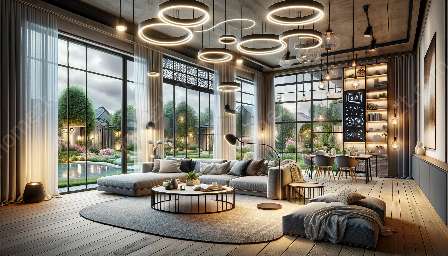Lighting automation has revolutionized the way we control and manage lighting in our homes and businesses. With the integration of smart lighting solutions and intelligent home design, the possibilities for creating an attractive and efficient lighting environment are endless. In this article, we will explore the various techniques and technologies that are driving the evolution of lighting automation, and how they can be seamlessly integrated into intelligent home design and smart lighting solutions.
Understanding Lighting Automation
Lighting automation refers to the use of technology to control and manage lighting systems, allowing for automated operation, remote access, and energy efficiency. By incorporating smart lighting solutions and intelligent home design, lighting automation can significantly enhance the functionality, aesthetics, and energy efficiency of any space.
Smart Lighting Solutions
Smart lighting solutions leverage advanced technologies such as sensors, controllers, and wireless communication to provide intelligent control over lighting systems. These solutions offer features such as customizable lighting scenes, scheduling, motion detection, and remote access via smartphone apps or voice commands. By integrating smart lighting solutions into a space, users can create personalized lighting experiences, improve energy efficiency, and enhance security.
Intelligent Home Design
Intelligent home design involves the strategic integration of technology and design principles to create environments that are functional, comfortable, and efficient. By incorporating lighting automation into intelligent home design, lighting can be seamlessly integrated into the architecture and interior design, enhancing the overall ambiance and usability of the space.
Techniques and Technologies
Several techniques and technologies are driving the advancement of lighting automation:
- Wireless Lighting Control: Wireless lighting control systems allow for seamless installation and flexibility in controlling individual fixtures or entire lighting groups.
- Occupancy and Motion Sensors: These sensors detect occupancy and motion, automatically adjusting lighting levels to save energy and improve convenience.
- Daylight Harvesting: Daylight harvesting systems utilize sensors to adjust artificial lighting levels based on the amount of natural light available, optimizing energy usage.
- Color Tuning: This technology allows for dynamic control over the color temperature and intensity of light, enabling users to create varied lighting effects to suit different activities and moods.
- Centralized Control Systems: Centralized control systems provide a single interface for managing all lighting systems, allowing for easy monitoring, scheduling, and customization.
Integration with Intelligent Home Design
Integrating lighting automation with intelligent home design involves considering the placement of fixtures, the use of natural light, and the creation of customized lighting scenes that complement the overall design and functionality of the space. By blending lighting automation seamlessly into the architecture and interior design, a harmonious and energy-efficient environment can be achieved.
Conclusion
Lighting automation, when combined with smart lighting solutions and intelligent home design, has the potential to transform any space, offering enhanced aesthetics, energy efficiency, and convenience. By understanding the techniques and technologies driving lighting automation, and integrating them into intelligent home design, individuals and businesses can create attractive and efficient lighting environments that are tailored to their specific needs and preferences.


